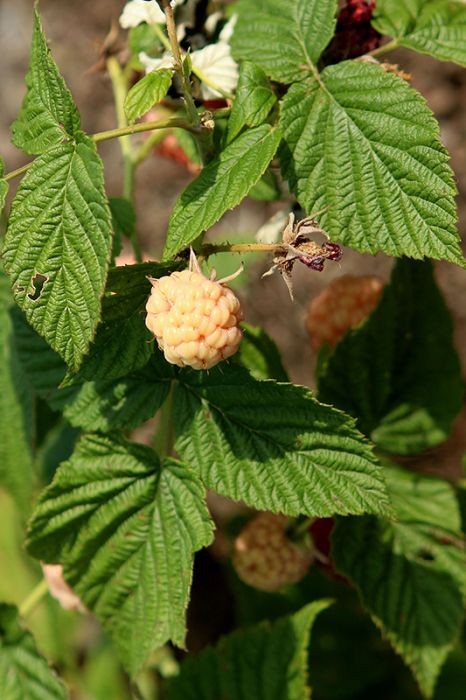Raspberry Growing Basics
Get the basics to growing your raspberries in Minnesota!



Out of stock
Coming soon, still growingThis selection is an everbearing yellow-gold raspberry that is extremely sweet and excellent for fresh eating, canning and preserves; similar to red raspberries in all respects but color; upright and self-fruitful, producing few thorns
Rubus idaeus 'Anne'
Group/Class: Floricane - Summer Bearing
Elevate your landscaping with Gertens' unmatched variety of shrubs! Selecting the right shrubs for your backyard can enhance its beauty and functionality. Consider factors like sunlight, soil type, and mature size when choosing shrubs. For sunny areas, flowering shrubs like roses or hydrangeas can add color and charm. In shady spots, opt for shrubs like azaleas or hostas. Evergreen shrubs provide year-round interest and privacy, while deciduous shrubs offer seasonal color changes. At Gertens, we offer a wide selection of shrubs to suit every backyard need.
Anne Raspberry is a small shrub that is commonly grown for its edible qualities. It produces gold heart-shaped berries with yellow overtones which are usually ready for picking from early to late summer. The berries have a sweet taste and a juicy texture.
The berries are most often used in the following ways:
Anne Raspberry has rich green deciduous foliage on a plant with an upright spreading habit of growth. The fuzzy oval compound leaves do not develop any appreciable fall color. It features an abundance of magnificent gold berries with yellow overtones from early to late summer.
This is an open multi-stemmed deciduous shrub with an upright spreading habit of growth. Its relatively coarse texture can be used to stand it apart from other landscape plants with finer foliage. This is a high maintenance plant that will require regular care and upkeep. Each spring, cut back all dead and two-year old canes to the ground, leaving only last year's growth standing. It is a good choice for attracting birds to your yard. Gardeners should be aware of the following characteristic(s) that may warrant special consideration;
Aside from its primary use as an edible, Anne Raspberry is sutiable for the following landscape applications;
Anne Raspberry will grow to be about 4 feet tall at maturity, with a spread of 4 feet. It tends to be a little leggy, with a typical clearance of 2 feet from the ground. It grows at a fast rate, and under ideal conditions can be expected to live for approximately 10 years. This is a self-pollinating variety, so it doesn't require a second plant nearby to set fruit.
This shrub may not always play well with others; as such, it is best grown in its own designated garden space or isolated area of an edibles garden. It should only be grown in full sunlight. It prefers to grow in average to moist conditions, and shouldn't be allowed to dry out. This plant should not require much in the way of fertilizing once established, although it may appreciate a shot of general-purpose fertilizer from time to time early in the growing season. It is not particular as to soil pH, but grows best in rich soils. It is somewhat tolerant of urban pollution. This is a selected variety of a species not originally from North America. It can be propagated by division; however, as a cultivated variety, be aware that it may be subject to certain restrictions or prohibitions on propagation.
| Gerten Grown Plants | Gerten Grown Plants |
|---|---|
| Bloom Time | Spring |
| Harvest Time | Early Summer, Summer, Late Summer |
| Sun Preference | Full-Sun |
| Mature Height (Range) | 2 - 5 feet |
| USDA Hardiness Zone | 4, 5, 6, 7, 8, 9 |
| Common Family Name | Raspberry |